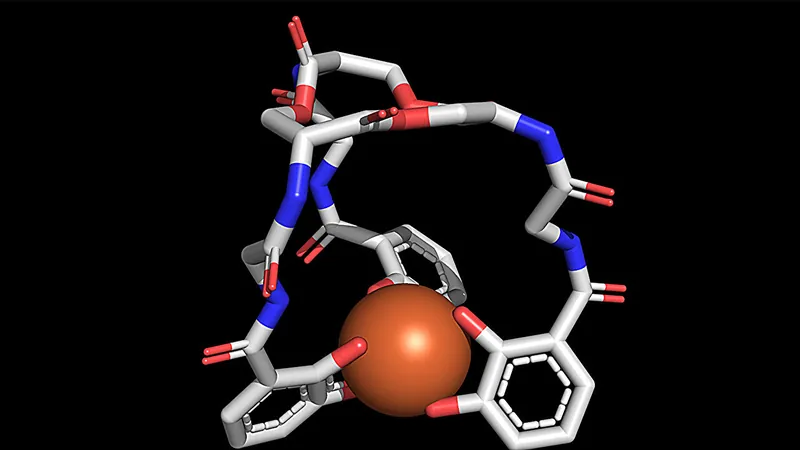
Unlocking Nature's Cleanup Crew: How a Special Molecule Helps Microbes Feast on Methane
2025-09-04
Author: Daniel
The Role of Methane in Climate Change: A Hidden Menace
Methane, a potent greenhouse gas with a warming potential 80 times greater than carbon dioxide over a short period, plays a significant role in climate change. It predominantly arises from decomposing organic materials found in landfills and swamps, making its management crucial for environmental health.
Microbial Heroes: Meet the Methanotrophs
Enter the methanotrophs—microbes that thrive by consuming methane and transforming it into carbon dioxide and biomass. Despite their importance, scientists have long been puzzled about how these tiny environmental warriors obtain the essential nutrients they require to perform this vital function.
Breakthrough Discovery: A New Molecule for Iron Acquisition
A groundbreaking study from the University of Utah has shed light on this mystery. Researchers have developed an innovative technique called "inverse stable isotope probing–metabolomics" (InverSIP), which links microbial DNA to the small molecules they produce. Through this pioneering approach, they identified a new molecule named methylocystabactin that enables methane-eating bacteria to capture iron from their surroundings, a critical nutrient for methane oxidation.
According to lead researcher Aaron Puri, this discovery not only enhances our understanding of methane-sequestering processes but could also pave the way for utilizing methanotrophs to convert methane into valuable chemicals and fuels.
A Complex Community: Cooperation and Competition Among Microbes
Fascinatingly, Puri's team uncovered that while some bacteria produce methylocystabactin, others in the same community exploit this molecule without contributing to its creation, a behavior that earns them the nickname "cheaters." This dynamic reveals the intricate relationships within microbial ecosystems and underscores the significance of the newly discovered molecules in sustaining these communities.
Implications Beyond Methane: A Tool for Microbial Research
This study does more than just illuminate one aspect of methane consumption; it showcases the potential of InverSIP as a powerful tool to investigate other microbial communities. Puri envisions applying this method to diverse environments, including human-associated microbiomes, offering a deeper understanding of how these microbial entities interact with their ecosystems.
Conclusion: A Promising Future for Environmental Innovation
As the world grapples with climate change, innovations like this one could lead to new strategies for managing greenhouse gases. By unlocking the secrets of microbial life, scientists are paving the way for sustainable solutions to protect our planet.


 Brasil (PT)
Brasil (PT)
 Canada (EN)
Canada (EN)
 Chile (ES)
Chile (ES)
 Česko (CS)
Česko (CS)
 대한민국 (KO)
대한민국 (KO)
 España (ES)
España (ES)
 France (FR)
France (FR)
 Hong Kong (EN)
Hong Kong (EN)
 Italia (IT)
Italia (IT)
 日本 (JA)
日本 (JA)
 Magyarország (HU)
Magyarország (HU)
 Norge (NO)
Norge (NO)
 Polska (PL)
Polska (PL)
 Schweiz (DE)
Schweiz (DE)
 Singapore (EN)
Singapore (EN)
 Sverige (SV)
Sverige (SV)
 Suomi (FI)
Suomi (FI)
 Türkiye (TR)
Türkiye (TR)
 الإمارات العربية المتحدة (AR)
الإمارات العربية المتحدة (AR)